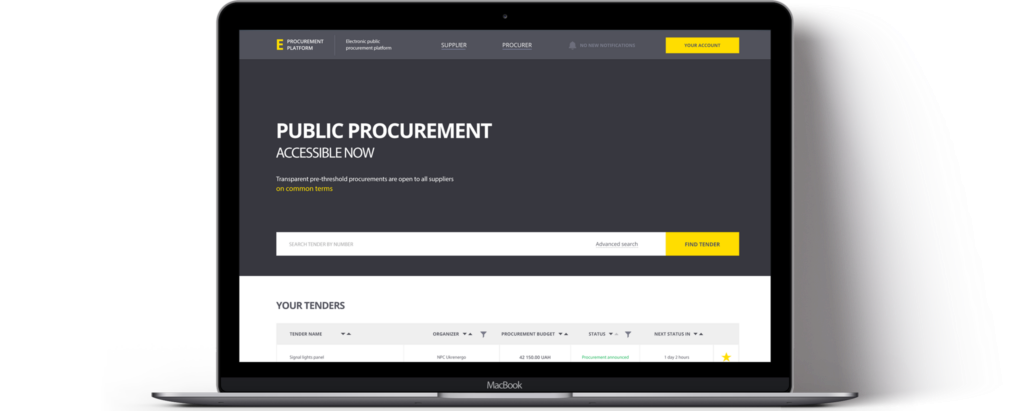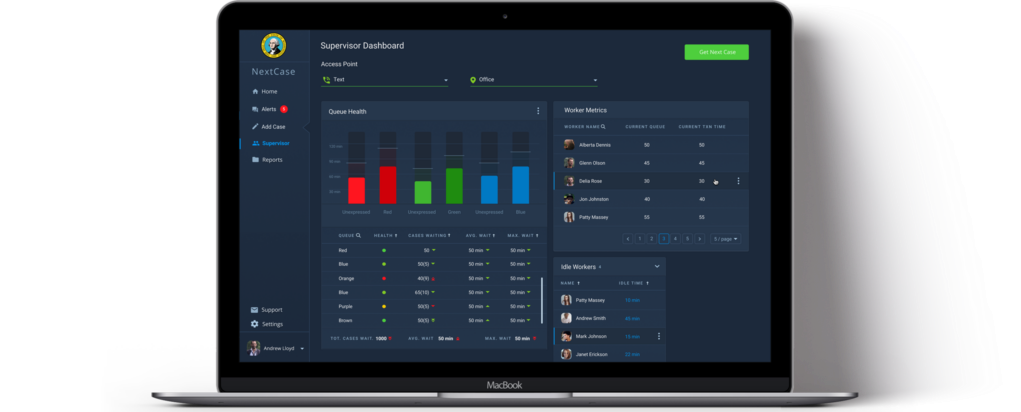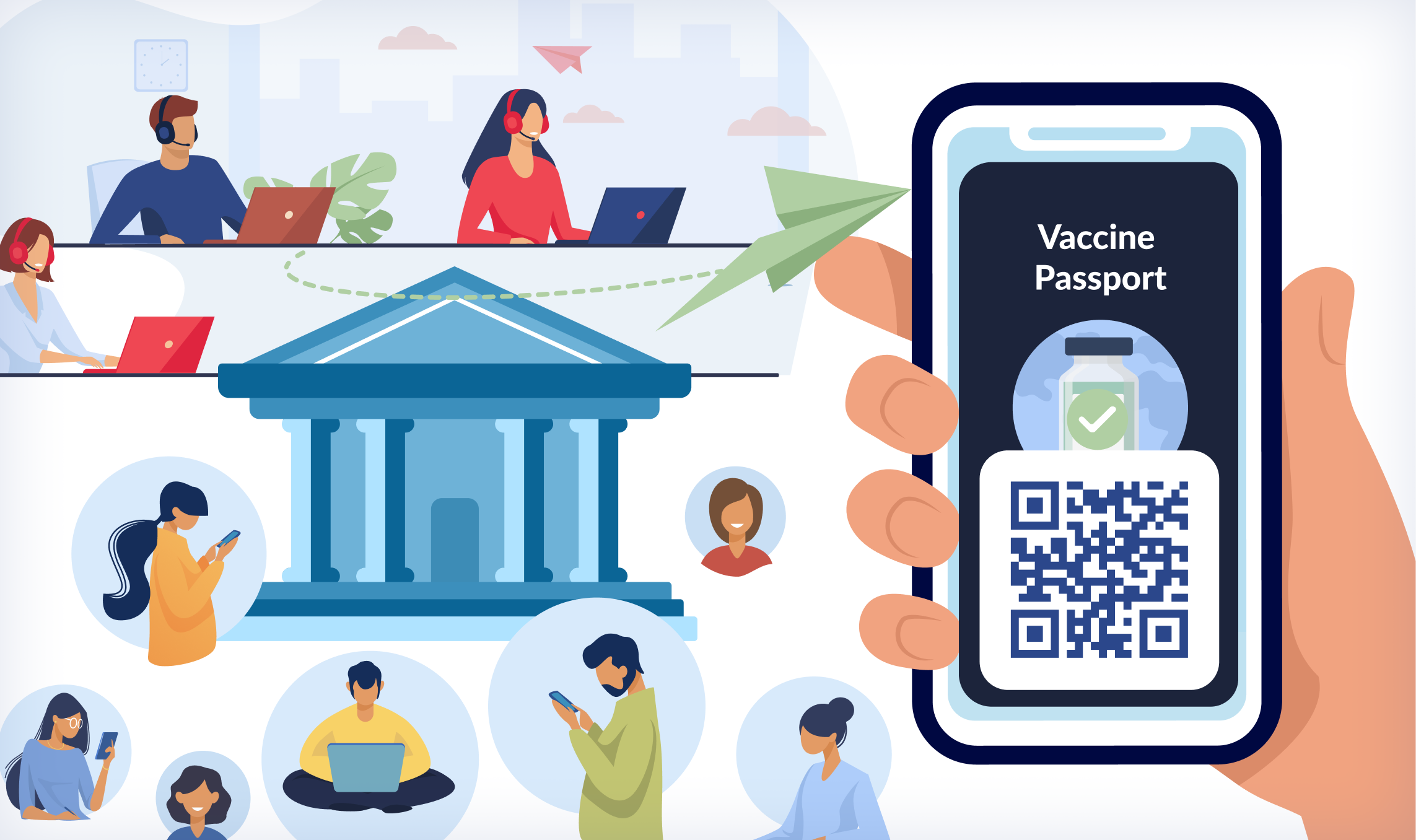The AI revolution isn’t slowing down, and its impact on multiple industries, including governance, continues to grow. Automated workflows, fraud detection, and personalized citizen services are some of the things you can achieve with AI.
But hold on. Before AI can work its magic, governments need to go digital. The good news? The past decade has seen a surge in e-governance solutions – online visa processing, e-passports, and even online voting.
This article explores relevant e-government trends in 2024. We’ll also highlight the necessity of these virtual governance platforms in today’s world. Read on to discover our experience in e-government development.
The E-Governance Outlook in 2024
The public sector has always lagged in innovation because of many factors, chief of which is legacy systems. But the tides are turning. The pandemic highlighted the need for adaptation, whereas the development of AI brought new possibilities. By embracing modern technologies, governments can finally leapfrog outdated systems and deliver efficient and citizen-centered services.
Here are some ways governments will implement these trends in 2024:
Prioritize Adaptive Data Privacy
New government technologies will focus on protecting data and identifying incoming security threats. Governments will have to switch their vulnerable legacy infrastructure to adaptive processes that are capable of detecting loopholes and mitigating the impacts of potential attacks.
Create Pathways to Digital Citizenship and E-Democracy
A digital citizen is an individual that is recognized as a physical entity across all online government channels. And through this digital citizenship, the concept of e-democracy will spread across nations due to openness and transparency in government operations.
Emphasize Cloud-Based Services
Governments will shift their focus to cloud-based services in line with efforts to modernize underperforming and vulnerable legacy systems. We will also witness an increase of XaaS (Anything-as-a-Service) strategies in e-governance.
Establish Multichannel Electorate Participation
Since the pandemic decreased people’s access to public services, governments had to digitize these sectors to keep in touch with citizens. Following this growing e-governance trend, nations will use multiple communication channels to increase engagement with constituents.
Invest in Extensive Data Analysis
With the prominence of digital solutions, governments will need to invest in more data initiatives. Countries will also introduce advanced analytics to make all activities efficient, uniform, and citizen-oriented.
E-Governance Adoption Today
With a better understanding of government trends in 2024, let’s explore things to consider for e-governance platforms moving forward.
Cybersecurity
According to Forbes, state and local municipalities in the US are major targets for hackers. Primarily because their IT security teams are short-staffed and thus can’t keep up with the evolution and sophistication of cyber attacks. The cost of cybercrime in the US is forecast to grow and reach a staggering $1.82 trillion by 2028.
Similarly, reports from UK government agencies claim that there were approximately 2.39 million instances of cyber crime across all UK businesses. Germany has recently experienced a significant increase in cyber attacks on its ruling party as well as defense and aerospace firms.
As a result, investing in cybersecurity frameworks is the only way a country can protect itself from mass attacks on infrastructure and the citizenry. Some countries even dedicate independent security intelligence to repel organized hacks on public sectors. Most vitally, public awareness campaigns on cybercrime can prepare private citizens and public employees for potential hacks.
Military Readiness
In this era of soaring political tensions, every nation should invest in digitizing military infrastructure to meet the current demands. This strategy will create a centralized (or decentralized) network capable of monitoring and mobilizing fast-response machinery like UAV drones.
But with the digitization of military assets comes the risk of cyberwarfare. A short line of a malware-bearing code can render a country’s military infrastructure defunct. The Stuxnet attack on Iran’s nuclear strategy highlights the potency of such cyber weapons.
Therefore, safeguarding attack-prone military assets like F-35 jets, UAVs, and satellites should be prioritized.
Blockchain Adoption
Blockchain technology is gaining traction in the government sector. This trend is driven by blockchain’s potential to enhance transparency, security, and efficiency in public administration.
Blockchain can provide secure and tamper-proof digital identities for citizens. Countries like Estonia have pioneered the use of blockchain for e-Residency, offering digital identity and status to non-residents, which can be used to start and manage a business online.
Another use case of blockchain is to guarantee a transparent and secure method for voting, reducing fraud and increasing voter confidence. Recently a number of U.S. states have approached the Cardano Foundation to collaborate on a blockchain-based voting platform. In the past, several small-scale events like town meetings, student government elections and state political party conventions were run on blockchain.
Also, blockchain can streamline the process of land registration by providing a clear, unchangeable record of ownership. Nations such as Sweden and Georgia have implemented blockchain technology in their land registries to reduce fraud and increase transparency.
Multichannel Citizen Engagement
With the rise of the digital citizen, governments need to expand their communication channels beyond traditional media. E-government efforts will implement social media, chatbots, and augmented reality to create awareness about policies and programs.
An example of such initiatives is the public safety feature on Apple devices. Citizens can activate this service on their devices to receive amber alerts and imminent threat warnings.
Smart Cities
Modern megalopolises like Copenhagen, Amsterdam, and Stockholm have transformed into smart cities over the past decade. These towns have smart grids with renewable energy sources like solar and wind.
The improvement of living standards in established smart cities is enough encouragement for other countries to follow this blueprint. Currently, the UAE is working on the Smart Dubai project that will transform the economic and cultural hub into a smart city by 2030.
Essentially, any country interested in improving living standards must adopt a smart city initiative in the public sector.
Artificial Intelligence
Governments around the world are embracing AI to improve efficiency, automate tasks, and deliver better services to citizens.
AI can be used to detect fraudulent activities in government programs. The US Department of Health and Human Services has already created an inventory of AI use cases identifying anomalies that suggest fraud.
AI algorithms can aid in predictive policing by analyzing crime data to predict where crimes are likely to occur. They can also analyze vast amounts of data from CCTV footage, social media, and other sources to help law enforcement identify criminals, locate missing persons, and combat human trafficking.
AI can be used to improve the quality of government services. AI-powered chatbots can answer citizen inquiries, schedule appointments, and process routine requests, freeing up human staff for more complex tasks.
Voting Online
One of the blossoming e-government trends at the moment is e-voting. The most famous example is the i-Voting platform under the e-Estonia project. Since its inception in 2005, the system has been used by over 44% of the population in elections.
But despite positive reviews from the tech world, countries don’t seem to be in a rush to implement e-voting. In fact, Switzerland has abandoned its online voting system due to irregularities.
Governments are also reluctant to implement EVMs because they are prone to external proxy and server-side attacks. Incompetence from the regulators can also jeopardize the entire system.
For example, connecting the system to an open WIFI network can allow hackers access. Also, corrupted USB devices can introduce malware or spyware into the e-voting framework.
In densely-populated countries like the USA, India, and Russia, centralizing such infrastructure costs a lot of money. Most importantly, the citizenry is reluctant about the integrity of the platforms.
With all that said, 2024 turned everything on its head. Countries are now encouraged to explore online voting options. But first, governments would have to update their entire infrastructure to repel hackers and unauthorized access to sensitive data.
This rapid change in mentality will increase investments in blockchain and AI over the coming years. Ultimately, the new era of e-democracy beckons.
Space Race 2.0
A new space race is currently brewing between Elon Musk’s SpaceX and Boeing. As it stands, SpaceX is leading the charge. Although we enjoy the idea of private citizens going to Mars, this era of privatization poses a threat to government agencies like NASA that used to monopolize space exploration.
As the race heats up, government agencies might have to choose sides or impose regulations on issues like low-Earth orbit and space tourism.
Furthermore, the climate will feel the long-term impacts of an unregulated space race. In an interview with Salon, Avi Loeb, a theoretical physicist, expressed concerns about the carbon footprint of SpaceX and other related projects. He also highlighted that “the brightness of SpaceX-s satellite” would disrupt space observation.
Redwerk E-Governance Experience
In line with our dedication to effective and transparent governance, we always monitor e-government trends. Our team has also contributed to the development of several e-government solutions in the public sector of countries like Germany, Belgium, Italy, and the United States.
Our latest project was the upgrading of the EUREL EUGI platform for voting in the European Parliament. The scope of our contribution covered the migration of a (legacy) JBoss application to Spring/Tomcat.
Other e-government projects we’ve worked on include:
City Council Decision-Making
City Council is an e-government solution for decision-making in city councils. We partnered with Green Valley for this project. While working on this project, the main challenge was to help Green Valley develop a module that tracked project milestones and eventual implementation. To address this challenge, we integrated modules to monitor attendance and voting as well as curate workflows and PDF/A publications. We also worked on the iReport Green Valley CMS plugin to request and report data.
YouTown
This platform provides updates from city services, job listings, and proposal solicitations. This project’s main challenge was to create a program with robust architecture capable of aggregating data from multiple civic, licensing, and transportation services. Our solution to the problem was to develop a backend module to crawl city-owned websites for data collection. This information is then stored in databases for instant retrieval.

ProZorro
ProZorro is an electronic module used for tender procurement. This platform caters to municipal institutions and enterprises. The primary challenge our team faced when preparing the specification for a ProZorro-based solution was outlining the constraints based on budget, deadlines, and technical capability. To this effect, we suggested an advanced but easy-to-use UI/UX design for the e-procurement platform users.

Web Intake
Web Intake is a service that allows citizens to submit permission requests for property upkeep and address updates. Government personnel can also review and grant these requests on the same platform. The main challenge we faced during this project was to create a system that met all government regulations while providing a secure dashboard for processing requests. In a collaborative partnership with Green Valley, our Redwerk team implemented, documented, tested, and prepared a foolproof and simple installation package for Green Valley’s field engineers.
Current
The Current app is a workflow management application that helps government agencies to improve operational efficiency and customer service. Our biggest challenge while working on the app was creating a customizable product with robust functionality that meets the standards of government agencies in the USA. During our collaboration with the C!A team, we developed a powerful web app for processing citizens’ requests within a range of state-administered programs in the USA.

Final Words
In this tech transformation era, e-governance relies on advanced technology to meet citizens’ demands. Public infrastructure running on legacy systems needs to be refurbished to prevent attacks. In the same vein, cybersecurity should remain a priority to protect a country’s military and social assets from cyberwarfare.
Also, failing economies can rely on blockchain technology to revitalize their currency. Also, failing economies can rely on blockchain technology to revitalize their currency. By following the blueprint laid out by countries like Estonia, nations can embrace e-governance and improve the efficiency of the public workforce. And most importantly, e-government fosters transparency and democracy.
At Redwerk, we are always excited to work on e-governance solutions and usher in the new era of digital democracy.
See how we upgraded a voting system for the European Parliament in less than 30 days




